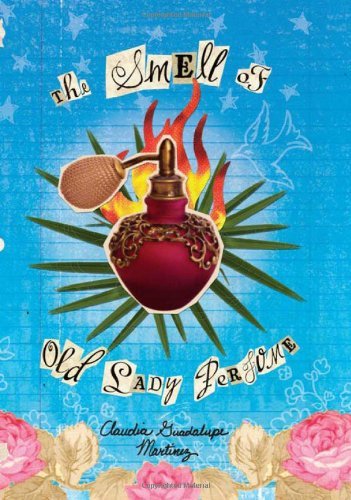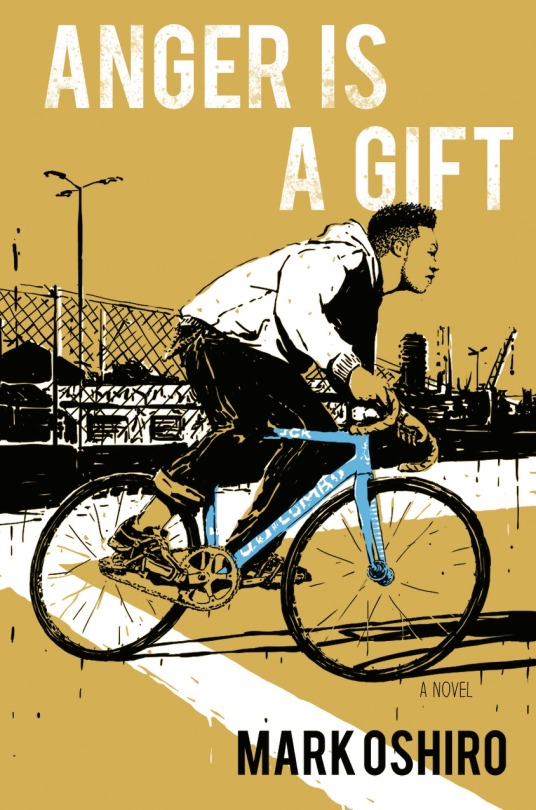#latinx in kidlit

¡Qué bonita bandera! AKA what heritage(s) do you claim?
I am an unapologetically Black-identified DominiRican, My mother is from La Romana in the Dominican Republic, and my father is from Mayaüez, Puerto Rico. I was born and raised in the Bronx, and I would argue that being a caribeña from New York City is a distinct identity.
When was the first time you saw yourself represented?
It absolutely was Sonia Manzano who played Maria on Sesame Street and soon thereafter Freddie Prinze on Chico and the Man. I was an adult when I first saw myself as a Latina in a book, and unfortunately, it was in Oscar Lewis’ La Vida. As a young adult, the closest I came to seeing myself were in the African American characters in books by Walter Dean Myers and Rosa Guy.
How do you connect to your heritage through your books (if at all)?
I’ve written six novels and twice as many short stories and novellas, and in every single one you will find a Puerto Rican or Dominican woman or girl even if they’re not the protagonist. I write the characters whose relationship to their Latindad departs from what you might read in the average intro to Latino literature course. The one whose first – and maybe only language – is English, doesn’t dance salsa and didn’t have a special relationship with her abuelita, and for whom all that is a point of pain. The one who isn’t preoccupied with “straddling two cultures” because she intuitively understands that she’s at once much simpler and more complicated than that. The one who knows all of Cardi B’s songs and reads Sonia Sotomayor’s decisions.
In fact, in mostly all of my stories you’ll find specifically a Latinx hip-hop feminist whether she identifies explicitly as that or not.
What do you hope for the future of Latinx books?
My biggest hope is to see more of our work adapted for TV and film. Although we remain underrepresented, we still have a tremendous body of work that crosses genres and aesthetics. We have and continue to write everything from horror to satire, and yet people still have a very narrow idea of what makes Latinx literature. And as someone who writes frequently about Latinx people from urban communities who are low-income, I’d like to see the shaming of that fall away. Yes, we need to have more depictions of people who are doctors and lawyers and such, but we do not have to render invisible those who are not. The answer is to complicate them not erase them.
What is the book that inspired you to write for kids/teens?
That’s a tough one to answer because it was reading YA as a teen myself that inspired me to write. I was a teen writing for teens, and not only was I reading voraciously, that was, like, over thirty years ago. The authors I remember striking a chord with me when I was in seventh, eighth grade were Judy Blume, Marilyn Sachs, Ellen Conford, S.E. Hinton, Sonia Pilcer, Paul Zindel and Walter Dean Myers. And Charles Dickens. (En serio.) I didn’t have the diversity of writers and characters that are available to young people now so imagine the amazing stories we’re in for when these young writers of color come of age.
What are you writing now?
I’m currently working on a middle-grade series, developing a TV show based on one of my novels for adults and a few screenplays. I’m also re-publishing my Black Artemis backlist - that’s the pen name under which I wrote three novels of feminist hip-hop noir. Just for the hell of it, I’m writing a multimedia novel on my blog that I update when I need a break from the other projects. My latest available YA novel is Show and Prove which is set in the summer of 1983 in the South Bronx and has a nifty cultural dictionary to go along with it.

After graduating from Columbia University with a BA in history-sociology and an MPA from its School of International and Public Affairs, Sofia Quintero began her first career as a policy analyst and advocate. She worked for various nonprofit organizations and government agencies including the Vera Institute of Justice, Hispanic AIDS Forum, and the New York City Independent Budget Office. After years of working on diverse policy issues, however, Sofia heeded her muse to pursue an entertainment career.
Determined to write edgy yet intelligent novels for women who love hip hop even when hip-hop fails to love them in return, Sofía wrote her debut novel EXPLICIT CONTENT under the pen name Black Artemis. Booklist said of her debut, “Fans of Sister Souljah’s The Coldest Winter Ever will find this debut novel just as tantalizing…” Since then Sofia has authored four more novels and almost twice as many short stories and novellas including her award-winning young adult debut EFRAIN’S SECRET (Knopf 2010.)
She recently earned an MFA in writing and producing TV at the TV Writers Studio of Long Island University and contributed the children’s anthology WHAT YOU WISH FOR, the proceeds of which go to build libraries for Darfuri children in Chad. Her journalistic writings have been published in Urban Latino, New York Post, Ms., Cosmopolitan for Latinas and El Diario/La Prensa.
As an educator, she is a writing mentor at Urban Word NYC, a teaching artist at the National Book Foundation’s reading program BookUpNYC and the co-publisher of the hip-hop feminist curriculum Conscious Women Rock the Page. Sofia was nominated for the Women’s Media Center Social Media Award in 2010 and is completing her next young adult novel SHOW AND PROVE.
Website*Twitter*Instagram*Wattpad*Facebook*Buy

¡Qué bonita bandera! AKA what heritage(s) do you claim?
Mexican and Israeli, but also Bulgarian and Syrian and who knows what before that.
When was the first time you saw yourself represented?
It’s hard to pinpoint, because of all the little facets of my background. The first time I read about a Mexican with a varied background was in the book Mexican High by Liza Monroy, which was inspired by the international school I attended. I read it in college and didn’t love it, but it’s the first concrete memory I have of kids like me who find it hard what to call themselves or answer ‘where are you from?’ only to get a repeat follow-up with added emphasis on the 'from.’
How do you connect to your heritage through your books (if at all)?
I like to try to write about people that are not just one thing, ethnically or culturally, since so few of the people I grew up with fit into a neat box in that regard. Just like in most regards, we are multi-faceted, and I want my books to reflect that.
What do you hope for the future of Latinx books?
Ubiquitous representation. I want Latinx kids to be able to see themselves in literature as widely as white children do, reflected not in stereotypes but in varied, nuanced, and informed ways.
What is the book that inspired you to write for kids/teens?
I Wanna Be Your Joey Ramone by Stephanie Kuehnert
What are you writing now?
I’m kind of working on three books right now, all in different stages. The one that is releasing soonest isBrief Chronicle of Another Stupid Heartbreak,which is about a teen girl who writes an online love column until she gets dumped and is struck by writer’s block.

Adi Alsaid was born and raised in Mexico City. He is the author of Let’s Get Lost, Never Always Sometimes, and North of Happy. He really loves the idea of a funny bio, but keeps failing to write one. He now lives and writes in his hometown.
Website*Twitter*Instagram*Buy

¡Qué bonita bandera! AKA what heritage(s) do you claim?
Mexican, Xicanx
When was the first time you saw yourself represented?
I read a poem by Lorna Dee Cervantez in speech class as a 10th grader. When I went to the library to look for it on the shelves, I stumbled upon Sandra Cisneros. Lorna was from California and Sandra from Chicago, even so they are Chicanas chignonas. As a kid growing up on the Texas border, I really connected.
How do you connect to your heritage through your books (if at all)?
I write about Xicanx kids in Chicago in Pig Park (Cinco Puntos, 2014) and also kids on the Texas border in The Smell of Old Lady Perfume (Cinco Puntos, 2008). Not a Bean (Charlesbridge, 2019) is a culturally relevant picture book about the lifecycle of a jumping bean.

What do you hope for the future of Latinx books?
There are so many stories that still need to be told. I meet a ton of kids who are budding writers. I can’t wait to read their stories one day.
What is the book that inspired you to write for kids/teens?
Pat Mora’s picture books are a big inspiration. As far as teens, I was really inspired by Benjamin Alire Saenz’ Sammy and Juliana in Hollywood. He writes about kids in the Southwest and does it beautifully. Reading his books doesn’t just make me want to write, it makes me want to write something beautiful.
What are you writing now?
I’m working on a couple of picture books now. My first picture book, Not a Bean, will be published by Charlesbridge in 2018. My 2008 middle grade,The Smell of Old Lady Perfume, will be available as an ebook and Spanish translation for the first time this year. It is very exciting to think my family abroad will be able to read.

Claudia Guadalupe Martinez grew up in sunny El Paso, Texas where she learned that letters form words from reading the subtitles of old westerns with her father. She now lives and writes in Chicago.
Website*Twitter*BuyPig Park!

¡Qué bonita bandera! AKA what heritage(s) do you claim?
I’m Mexican-American, but my loved ones growing up weren’t all Mexican, so I’ll often use the term Latina.
When was the first time you saw yourself represented?
Laura Esquivel’s Like Water for Chocolate.
How do you connect to your heritage through your books (if at all)?
The tradition of magical realism, the heritage of my main characters, the food they cook in their mothers’ kitchens, the bedtime stories they hear growing up.
What do you hope for the future of Latinx books?
That Latinx readers can find themselves in whatever kind of book they’re looking for, and that more books feature main characters with intersectional identities.
What is the book that inspired you to write for kids/teens?
The Chronicles of NarniaorThe Little Prince.
What are you writing now?
My bi Latina girls and enchanted murderous gardens novel, Wild Beauty,is out on October 3, and I’m currently working on Blanca & Roja,a Latinx retelling of Snow-White & Rose-Red meets Swan Lake, slated for 2018.

Anna-Marie McLemore(she/her) was born in the foothills of the San Gabriel Mountains and taught by her family to hear la llorona in the Santa Ana winds. She is the author of THE WEIGHT OF FEATHERS, a finalist for the 2016 William C. Morris Debut Award, and 2017 Stonewall Honor Book WHEN THE MOON WAS OURS, which was longlisted for the National Book Award in Young People’s Literature. Her latest is WILD BEAUTY, and BLANCA & ROJA is forthcoming in fall of 2018.
Website*Twitter*Facebook*BuyWild Beauty!

¡Qué bonita bandera! AKA what heritage(s) do you claim?
I identify as Latinx these days, but it’s actually a complicated answer. I grew up identifying as either Mexican, Chicano, or Latino. I’m a transracial adoptee, so all I knew about my biological parents was that my dad immigrated from Mexico and then left soon after I was born. I did one of those DNA tests in my late 20s and discovered that I was mostly Salvadoreño and Guatemalan, but I felt strange identifying with that heritage since it had not been part of my upbringing. Latinx feels right to me, both as a political statement and to describe who I am. I am brown and proud!
When was the first time you saw yourself represented?
The not-so-great answer: Speedy Gonzales. My twin brother and I loved him. The actually-great answer: The House on Mango Streetby Sandra Cisneros, which I read for my freshman year English class. I was 14 years old, and it changed my life forever.
How do you connect to your heritage through your books (if at all)?
I wrote a transracial Latinx adoptee into Anger is a Gift to explore the complicated issues of heritage, race, and identity. She’s not the protagonist, but plays a huge part in the life of my main character. My second novel (currently untitled) is a Latinx-inspired/influenced magical realism/horror story that takes place in a desert society and deals with migration. It is a much more intense exploration of my heritage, especially since I literally would not exist if my father had not immigrated from Mexico to California.
What do you hope for the future of Latinx books?
I want so many different types of stories! I want those of us in the Latinx community to explore all the issues we face; I want us to be able to celebrate our culture and share it with others, but with us at the helm. Ultimately, I want Latinx people telling Latinx stories.
What is the book that inspired you to write for kids/teens?
There are quite a few, but The House on Mango Streetis always going to be my first answer. That book showed me that stories could be about people like me, could be set in places that looked like where I lived and could be about things that affected my life. I am also massively inspired by Octavia Butler,Ursula K. LeGuin, and the Animorphs series (DON’T JUDGE, THOSE BOOKS ARE GREAT AND MESSED UP).
What are you writing now?
My YA debut, Anger Is a Gift, comes out May 22, 2018; I’m currently hard at work at a magical-realism-meets-horror standalone set in a desert. You can read an excerpt here:click!

MARK OSHIRO is the Hugo-nominated writer of the online Mark Does Stuff universe (Mark Reads and Mark Watches), where he analyzes book and TV series. He was the nonfiction editor of Queers Destroy Science Fiction! and the co-editor of Speculative Fiction 2015, and is the President of the Con or Bust Board of Directors. When not writing/recording reviews or editing, Oshiro engages in social activism online and offline. Anger is a Gift is his debut YA contemporary fiction novel.
